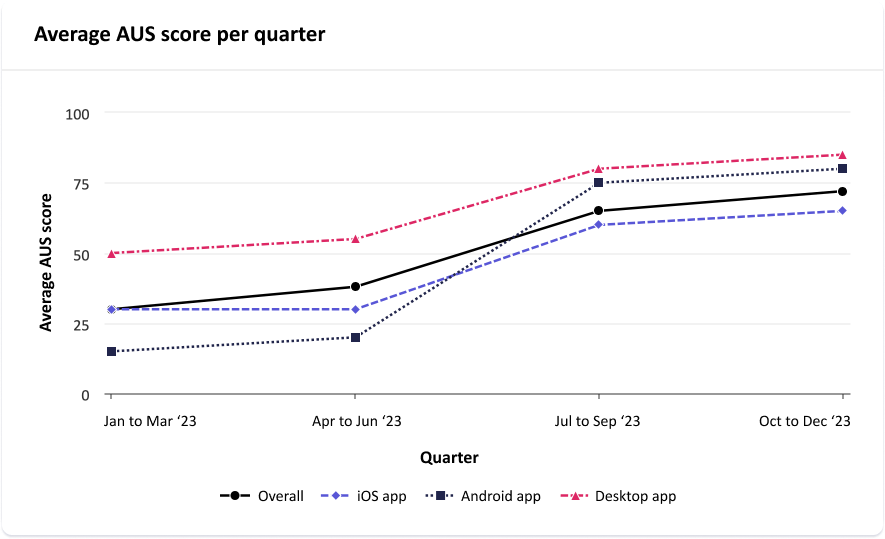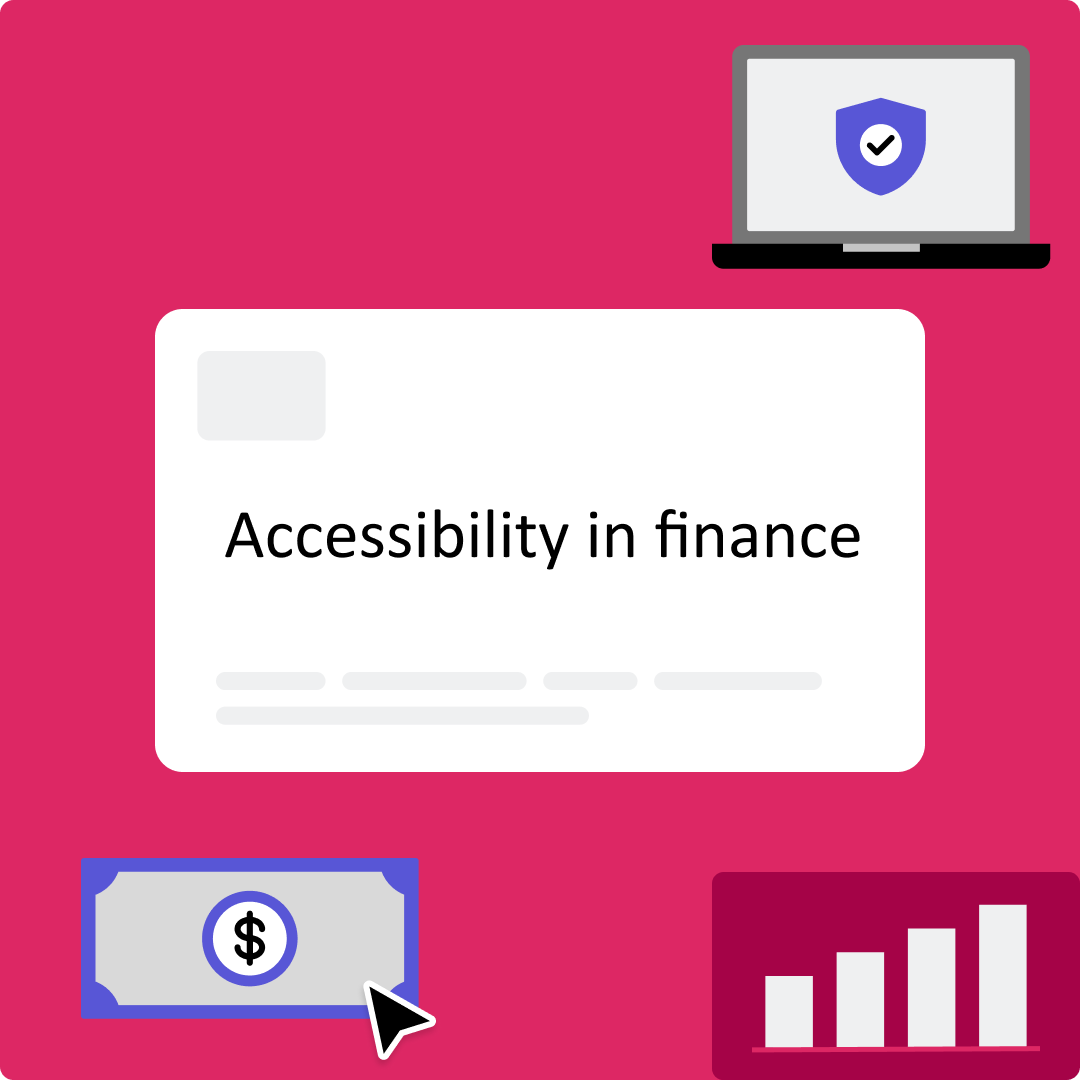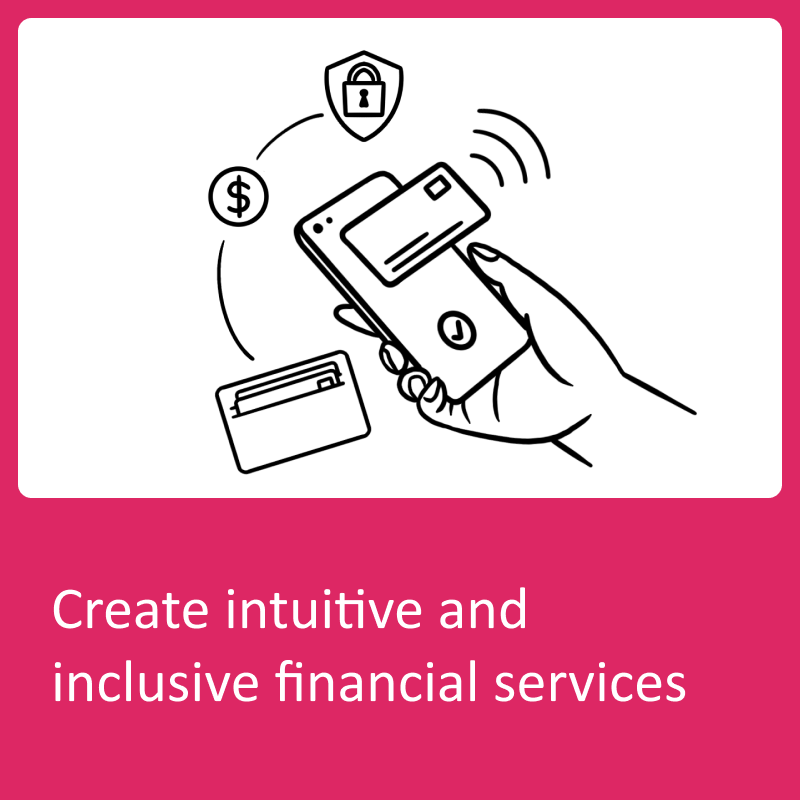Getting started with financial services accessibility
Let’s dive into the tactical steps you can take to improve the digital experiences of financial services for everyone.


Overview
With an increase of financial services shifting to a digital-first approach, it’s more important than ever that these services are not only accessible, but usable for people with disabilities. Everyone should have the opportunity to manage their finances effectively.
Managing money and planning for the future contribute to leading a stable and fulfilling life. All consumers should be able to do so independently and with ease.
According to Fable’s financial Insights survey, 2 out of 3 assistive technology users would switch financial services providers for a more accessible and usable experience. While it may be your features and customer service that attracts assistive technology users, it is the accessibility of your products that leads to loyalty and retention.
Incorporating accessibility into the development of financial products and services is all about building muscle and making incremental improvements over time. Here are some common ways to get started including:
Capture an initial baseline
To know what to focus on first, you must know how your digital products are working today. For finance products, the most important user journeys are those that facilitate core banking activities, ensure a seamless user experience, and promote user engagement.
Some of the most important areas of your product to ensure are accessible would be:
To assess these areas, you can use metrics like task completion rates, or even Fable’s Accessibility Usability Scale (AUS) if you are already aware that these flows are working well functionally for assistive technology users.
Tackle known issues
Once you have established your baseline of accessibility for these key flows, you’ll want to focus on fixing the highest impact issues. When prioritizing your issues and findings, consider the following:
Accessibility is all about “progress towards perfection”, so don’t be afraid to pick certain areas of focus and commit to fixes, rather than letting your backlog pile up.
Improve usability
Once your products are working as expected for assistive technology users, you can start thinking about ways to make the experience even better. Usability testing with assistive technology users will help you answer questions like, how enjoyable was the experience? Did that latest product update make it easier to use? Without metrics, answering these questions is challenging. Fable’s Accessible Usability Scale (AUS) score builds on the System Usability Scale (SUS) to quantify and measure the perceived usability of digital products for assistive technology users.
We’ve seen how brands like Apple, Google and Microsoft focus on usability and innovation to retain and grow their customer base. People with disabilities show brand loyalty towards companies that have accessible and usable experiences, and will seek other options if the services they need are not accessible.
Improve usability
Once your products are working as expected for assistive technology users, you can start thinking about ways to make the experience even better. Usability testing with assistive technology users will help you answer questions like, how enjoyable was the experience? Did that latest product update make it easier to use? Without metrics, answering these questions is challenging. Fable’s Accessible Usability Scale (AUS) score builds on the System Usability Scale (SUS) to quantify and measure the perceived usability of digital products for assistive technology users.
We’ve seen how brands like Apple, Google and Microsoft focus on usability and innovation to retain and grow their customer base. People with disabilities show brand loyalty towards companies that have accessible and usable experiences, and will seek other options if the services they need are not accessible.
Improve usability
Once your products are working as expected for assistive technology users, you can start thinking about ways to make the experience even better. Usability testing with assistive technology users will help you answer questions like, how enjoyable was the experience? Did that latest product update make it easier to use? Without metrics, answering these questions is challenging. Fable’s Accessible Usability Scale (AUS) score builds on the System Usability Scale (SUS) to quantify and measure the perceived usability of digital products for assistive technology users.
We’ve seen how brands like Apple, Google and Microsoft focus on usability and innovation to retain and grow their customer base. People with disabilities show brand loyalty towards companies that have accessible and usable experiences, and will seek other options if the services they need are not accessible.
Measure progress over time
To be able to show your accessibility improvement with confidence, you need to start benchmarking over time. You’ll want to do this once you’ve addressed the accessibility issues you find in your initial baseline tests of those key flows you decided on.
We suggest that you fix at least 80% of the high-severity issues before conducting any repeat testing. From there, the cadence at which you regularly conduct these benchmarks will depend on your product development velocity. Be sure to pick a frequency that makes sense for your team. The most important factor is that you stay consistent and share your progress with others on your journey.

Learn more about financial services accessibility
Check out these resources to learn more about the accessibility of financial services apps and websites, and how your team can work with Fable to practice inclusive product development.




